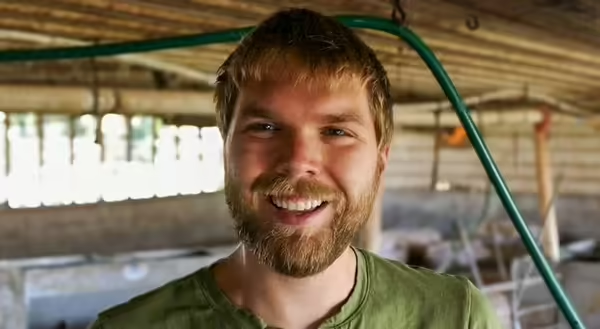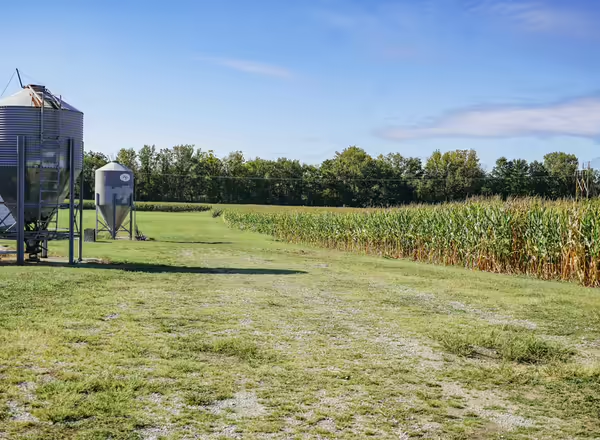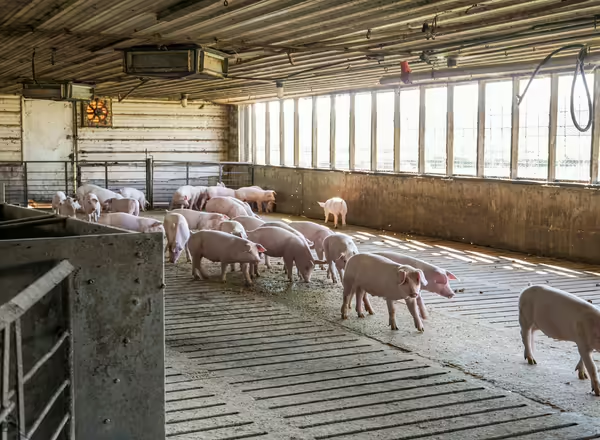
Max Allbritten lives in the home his grandparents built in the 60s, less than a thousand feet across the road from his childhood home and where his parents live today. In the six years since his father’s retirement from farming, the barns and equipment have slipped into disrepair.
Max was never meant to farm.
The 25-year-old from Vienna earned his associate degree as a dual-credit learner at Shawnee College while still in high school. He followed that with a bachelor's degree in animal science ruminant nutrition and a master’s degree in business administration, both from Southern Illinois University, all with the belief that he would not go home to farm.
But the farm kept calling him home.
It didn’t make financial sense to return home. As an MBA scholar, he knew he didn’t have the capital to bring the ranch back to a profitable enterprise. The facilities could no longer support a livestock operation without a complete rehaul. He would need cash, and a lot of it.
“Beginning again is almost harder than starting from scratch,” Max says. He bought a few pigs while maintaining his off-farm employment. After all, pigs don’t make enough to cover the cost of health insurance, at least not yet.
“The biggest issue in growing livestock is finding a market,” Max says. I can raise a pig — lots of people can — but finding a local market that is sustainable is difficult.”
Then, Max ran into a friend who told him about a new program coordinated by University of Illinois Extension.
IL-EATS opens the gate for Indian Point Ranch
The USDA Local Food Purchase Assistance Program provides states with funding to purchase locally sourced food from local producers and distribute it at no cost to underserved communities. In Illinois, it operates as IL-EATS.
“This is how I set myself up to be able to do this for a living full-time,” Max told himself. “This was made for someone like me.”
He began calling food banks in March. His first call was to Tri-State Food Bank in Vienna, just 10 minutes from Max’s Indian Point Ranch. Executive Director Glen Roberts walked the farm and discussed the potential of purchasing pork for the food bank.
He also established relationships with the St. Louis Area Foodbank and Operation Food Search, both in St. Louis, and the Central Illinois Foodbank in Springfield.
Expanding the ranch to meet new sales
Max had a decision to make — go into debt to purchase more pigs and rent hog facilities or step away from farming for good. Trusting the grant program would do what it promised to do, Max went all in.
“Having a guaranteed place to go every month changes everything,” Max says, making it easier to access capital and plan purchasing decisions.

He purchases 50-pound feeder pigs from a breeder in Effingham and rents a nearby feeding floor owned by a local landowner to feed the pigs until they reach the 300-pound harvest weight. A nearby meat processor prepares the cuts requested by the food pantries.
Within two months of his first sales, Max had repaid his loan. Just as impressive are the collateral benefits to the Illinois economy made possible by the IL-EATS program.
“We’re stimulating the ag economy beyond my farm,” Max says. His farm expansion benefits the feeder pig seller, the farmland owner of the rented facility, the small feed mill owner, and the meat processor.
Today, the farm processes about 32 pigs a month; 200 pigs are being fed on the ranch at any one time. “A lot of money is coming in, and a lot of money is going out to Illinois,” Max says.
Food access in southern Illinois
“The best part of this for me is where the meat’s going; it’s going to the people who need it most,” Max says. “I know where every animal is ending up.”
Johnson County has a poverty rate of 16.5%, higher than the national average of 12.5%, according to Data USA.
“I sleep good at night knowing the families who need the food have a reliable and safe source,” Max says.
Everybody wins in IL-EATS
“It is such a unique program; I have yet to find the downside,” Max says. “The economy is stimulated; my family is being helped; people who need food are getting food. It’s a win-win-win.”
Max praised the program leadership, from grant management to food bank deliveries.
“Very rarely has anything worked so according to plan,” he says. “The outlook for the future of the farm is as positive as it’s ever been.”
That brighter future is allowing Max to replace his old tractor with a newer used tractor and install a walk-in freezer at the ranch.
Raising pigs comes full circle

Max’s grandfather built the original ranch around pigs, then added Hereford cattle. Max’s father, David, remembers building fences with his dad. As a youngster, Max and his dad tore out those fences when the livestock markets crashed in the 90s.
Now, Max and his father are rebuilding fences in preparation for new pastures as they reintroduce cattle to the ranch. Max plans to raise organic beef which he hopes to sell to school districts while maintaining his hog production. Funds from his IL-EATS sales allowed him to purchase new fencing without adding debt.
“I get to redesign everything from scratch, and I get to do it with my dad,” Max says. “That was the motivation to come home, to have this experience with my dad. I want that for my kid someday.”